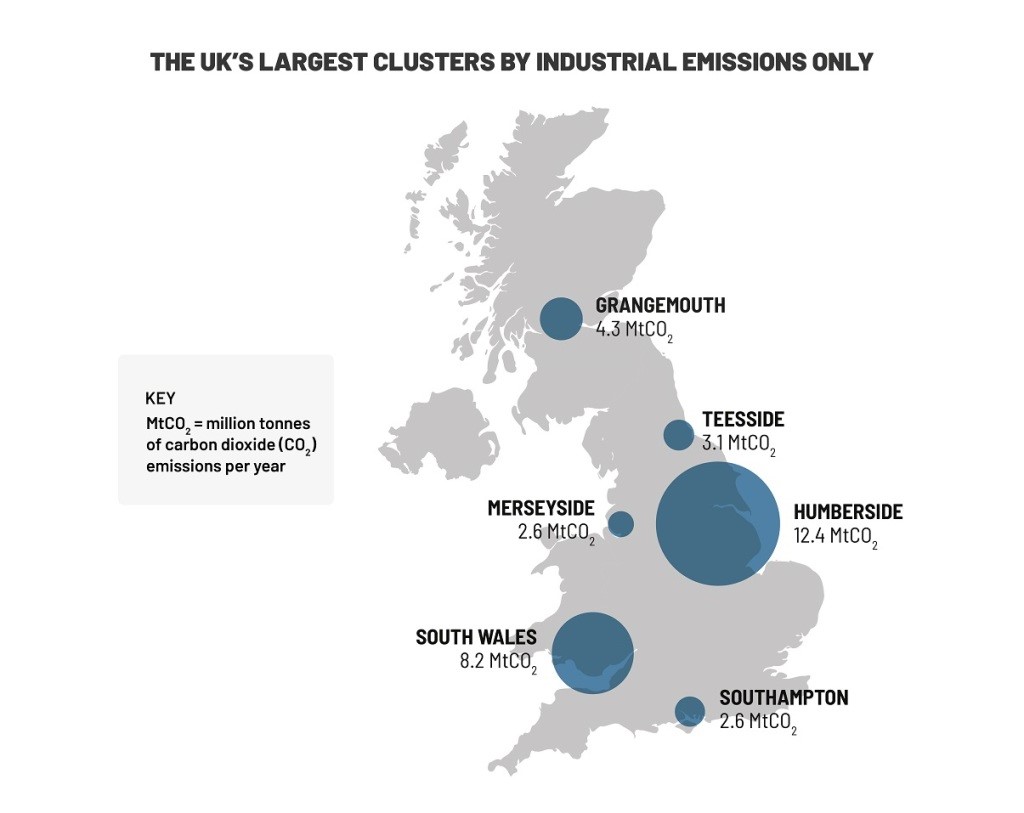Decarbonisation and Geoscience Data
In the developed world, industry accounts for a high proportion of greenhouse gas emissions with most coming from energy intensive industries in tight geographical clusters, like the Ruhr in Germany, the Gulf Coast in the US and northern England. In the emerging economies, new clusters of manufacturing and industry are also set to develop and grow. The way that these industrialised areas decarbonise will be crucial to the environment, to climate change, and staying within the ambitions of the Paris agreement. The availability of geoscience data will be vital for coordinated and optimal use of the subsurface and organisations like DDE will be involved in linking data like porosity and permeability and halite distribution in public access platforms to stimulate academic and industrial research and development.
The process of ‘carbonisation’ (as opposed to ‘decarbonisation’) began in the industrial revolution in northern Europe. It was stimulated by the distribution of geological resources like iron ore, high calorific coal and limestone so that areas like the north of England could rapidly industrialise in the 18th Century. In the same way, rock properties are today influencing the positions of modern industrial decarbonisation clusters, for example availability of CO2 geological storage space for fossil fuel power stations and industries or for hydrogen manufacture from steam methane reformation. Other underground technologies needed include hydrogen storage, compressed energy storage and heat storage.
These rock properties will have to researched, mapped and their risks of use fully understood.
Decarbonisation clusters in the UK
A good example are the industrial decarbonisation clusters of the UK in northwest and northeast England, eastern Scotland and south Wales. The biggest clusters by emissions are Humberside (12.4 MtCO2/yr), South Wales (8.2 MtCO2/yr) and Grangemouth (4.3 MtCO2/yr). The clusters contain mixtures of industries often linked through supply chains, common fuels and common infrastructure – but also now linked by the need to decarbonise.

UK industrial decarbonisation clusters. Source: https://www.catchuk.org/is-the-humber-region-ready-for-the-industrial-decarbonisation-challenge/
An example is in the northwest of England around the Mersey estuary. Here big industrial gas users, fossil fuel power stations, refineries and offshore gas field operators are joining forces, and with the help of the government are working towards a hydrogen economy that sees hydrogen buses on the roads, hydrogen trains, and hydrogen as a fuel for industry and power.
Clusters like this rely on the right geological conditions. The obvious geological requirement in the UK and many other industrial nations with incumbent fossil fuel usage is geological space for CO2. The UK has benefited from numerous studies of offshore CO2 storage space which allow planners a first pass look at candidate underground stores. Other geological features needed in a cluster are storage space for hydrogen for seasonal and shorter cycle storage. The northwest cluster has CO2 storage space in soon-to-be-decommissioned gas fields in nearby Morecambe Bay, hydrogen storage space in salt caverns in Cheshire – and big users of industrial fuel that would be better provided in the form of hydrogen rather than natural gas.
Energy demand growth in developing countries
But more than 90% of energy demand growth between now and 2050 will take place in developing countries and there is a continuing need expressed through the UN’s Sustainable Development Goal 7 to improve energy access to the poorest people.
An example is East Africa. East Africa’s population is forecast to grow from about 300 million today to 800 million by 2060 and 1150 million by 2090, and many people will reside in growing or new cities and rise in living standards and increase in population will increase energy demand. Some of this energy demand will be satisfied by low carbon sources like geothermal, CCS on power stations and the hydrogen economy.
But to be able to use these geologically-related sources, systematic surveys of volcanic geothermal, carbon dioxide and hydrogen storage will have to be done. Subsurface rocks will have to be seen rather differently – instead of containers from which materials are extracted, they should be regarded as containers for storage or disposal. At present, no systematic surveys for hydrogen storage have been completed in East Africa or elsewhere in Africa and knowledge of CO2 storage potential is patchy.
Following this survey work data will have to be stored in ways that allow access to academic and industrial researchers and Government regulators and policy makers. An example of a successful database in the UK is the ‘CO2Stored’ database that gives information on potential offshore geological structures in the UK.
But for an optimal, orderly and efficient use of the subsurface for decarbonisation, we will have to make sure that many other types of geological data are stored and can be made available. DDE as part of the International Union of Geological Sciences (IUGS) will be working with a range of stakeholders to develop these databases for the future.
Further reading
DDE White paper: https://www.ddeworld.org/news/detail/135
Stephenson, M H 2018. Energy and Climate Change: An Introduction to Geological Controls, Interventions and Mitigations, Elsevier, Amsterdam.
Stephenson, M H. Philip Ringrose, Sebastian Geiger, Michael Bridden and David Schofield 2019. Geoscience and decarbonization: current status and future directions. Petroleum Geoscience, 25, 501-508.
Stephenson M.H. 2021 Affordable and Clean Energy. In: Gill J.C., Smith M. (eds) Geosciences and the Sustainable Development Goals. Sustainable Development Goals Series. Springer, pp 159–182